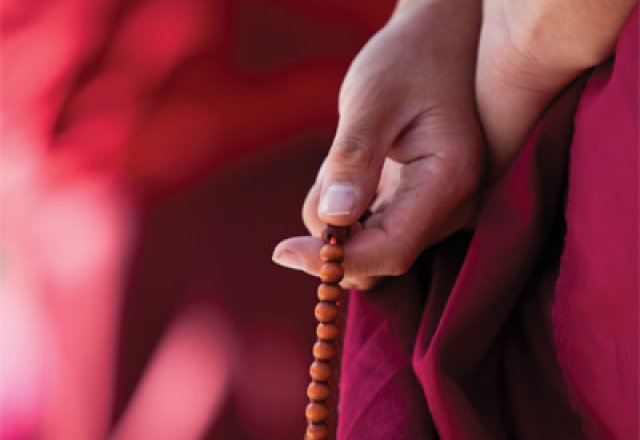
Energy cleansing with the Five Tibetans

Sally Mathrick explores the ancient yoga practice of the Five Tibetans
When cleansing, one needs to consider all aspects of the individual. When habitual foods are eliminated or when the body is supported to up-regulate cleansing, buried energies are often liberated and need to be released from the individual’s system. Exactly what these negative energies are is still not clear from a scientific perspective, though some in-roads are slowly being made. During a detox, people often feel stirred up and can experience difficult emotions, such as anger or sadness or feel as though they are in a mental ‘funk.’
Wholistic detox involves clearing unhelpful thoughts and emotions from the ‘bodymind complex.’ There are many tools available to help one do just that. Emotional freedom technique (EFT), also known as ‘tapping’, is a relatively new self- help method that taps on some energetic lines of the body to reduce the level of uncomfortable feelings or thoughts. Pranic healing is an established system of healing that focuses on cleansing the aura and chakra systems, through the use of breath, intention and movement, often with the help of a practitioner. Sound medicine is another form of energetic cleansing that sends sound vibrations through the physical body to cleanse and balance the whole system. Good counselling techniques can also enable cleansing of patterns that are no longer serving the individual, and require clearing and replacing.
My favourite energetic cleansing process is a series of yoga exercises, commonly know as the ‘Five Tibetans’ or Tibetan rites. Although called ‘The Five Tibetans’, there are actually seven exercises in total. The last two involve breathing, sounding, and focused attention rather than physical movements. They can be performed during a detox, or everyday for general health and wellbeing.
These are yoga practices that help to cleanse the energetic centres (chakras) of the body. The sequence first activates and cleanses the top two energy centres and moves down the body until the fifth exercise activates the second and base chakras. Interestingly, each of the chakras, according to yoga, are aligned with endocrine or hormone-secreting glands. By bringing energy and movement to these areas, the body may well receive great healing and rejuvenating effects. The sixth exercise is an energy lock, to help build and nourish good energy in the body, and is said to have an effect on sexual energy. The seventh practice involves setting and intention, and essentially reprogramming oneself with thoughts and intentions consciously selected.
The ‘Tibetan Five’ were initially published by Englishman, Peter Kelder, who had recorded the discoveries of his colleague, the ‘Colonel’, who lived with Tibetan lamas in the Himalayas. In Tibet, ‘The Five Rites of Rejuvenation’ details how Colonel had learned and adopted their way of life, and had reportedly reversed the aging process in doing so. To Kelder, the Colonel appeared as a man of 25 years younger than he actually was. Traditional Tibetan life included specific dietary and lifestyle habits, as well as the regular practice of these exercises.
The experience from practising these exercises regularly varies with each individual; however, in general, people feel increased vitality and clearer after performing them. With practice, one builds up their number of repetitions of the first five exercises until one reaches the maximum number, 21. The last two exercises are only ever performed three times. Begin by practising each exercise three times. Increase the number of repetitions slowly, to match your strength and fitness.
As a general rule, breathe only through the nose. When performing the five physical exercises, start the movement with an exhalation through the nose. The exception to this is when doing the standing position between the five physical exercises. This ‘recovery’ position involves standing with your legs hip- width apart and your hands on your hips. Inhale deeply through the nose, and then slowly and loudly exhale from the mouth. Complete two to three full breaths before moving to the next exercise.
Next: Five Tibetan Rites
Photo credit: Thinkstock


